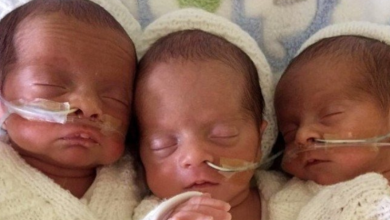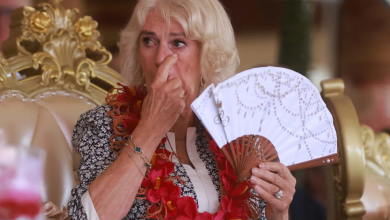This is a clear indication to get your beauty sleep.
A self-described “sleep evangelist” has partnered with a British bedding and mattress manufacturer to show what our bodies can look like in 25 years if we consistently don’t get enough sleep, and it’s not nice.

With the help of Dr. Sophie Bostock, Bensons for Beds produced striking digital renderings of how a female body might appear in 2050 if she typically gets just six hours of sleep each night.
Experts often advise getting between seven and nine hours of sleep, yet a 2024 Gallup poll revealed that 57% of Americans report needing more sleep.
In New York City, the average sleep duration is six hours and 36 minutes, based on a recent survey — with Staten Island showing an even lower average of just six hours and 18 minutes.
While we all recognize that fatigue doesn’t feel pleasant in the short term, it can also lead to long-term damage, as depicted by Bensons for Beds’ model “Hannah.”
Hannah’s characteristics — a hunched posture, thinning hair, and aging skin — were based on academic research into the effects of insufficient sleep, serving as a stark warning.
“Hannah is a thought-provoking illustration of the holistic impact that sleep has on maintaining overall health. Studies show that prolonged sleep deficiency can put you at a higher risk for conditions that may impact the heart — including obesity, heart disease and Type 2 diabetes,” stated Dr. Bostock.

Drooping jaws, puffy eyes, and sagging skin
Certain obvious symptoms of skin aging have been linked to sleep problems, according to research. According to a 2015 study, individuals who experience persistent poor sleep quality exhibit not only greater aging symptoms but also decreased skin barrier function and decreased satisfaction with their appearance.
Fine lines and wrinkles, red and puffy eyes, under-eye bags, dark circles, and drooping at the corners of the mouth can all result from inadequate or poor sleep over time.
Even those who don’t get enough sleep are seen as less attractive and healthier, according to research from Stockholm.
Hair
It’s a two-way street: It has been demonstrated that alopecia can result from sleep difficulties, and that alopecia can contribute to stress and restless nights.
Greasier hair has also been connected to poor sleep because when we don’t get enough sleep, our bodies—including our scalps—produce more cortisol, the stress hormone.

Shoulder and back discomfort
Back discomfort has frequently been linked to poor sleep, and naturally, this pain makes it more difficult to get a decent night’s sleep.
That entails not only agony for Hannah, but also an awkward hunched posture.

Stomach
Not getting enough sleep has been associated with an increase in visceral fat, the fat that accumulates around vital organs and is linked to metabolic diseases and insulin resistance.
The hormones responsible for regulating hunger, leptin and ghrelin, are also impacted, leading to an increase in appetite.
Bensons points out that tiredness can also reduce the likelihood of exercising, which, for Hannah, resulted in “significant weight around her tummy.”

Muscle atrophy and cankles
Chronic sleep deprivation acts as a “catabolic stressor,” potentially causing metabolic issues and a reduction in muscle mass.
Research has shown that even a few nights of restricted sleep can lower muscle protein synthesis rates in men. For Hannah, this is reflected in muscle atrophy, particularly in her arms and legs.
In addition, Hannah developed swollen ankles — a known indicator of heart disease, which can also stem from poor sleep habits.
Worst case scenario
A lack of adequate sleep can result in memory problems and a weakened immune system, increasing the chances of catching illnesses like the cold or flu.
Sleep deprivation is further linked to impaired cognitive abilities, elevated blood pressure, diabetes, heart and kidney complications, depression, and heightened inflammation, all of which can contribute to chronic health problems and various diseases.
“Hannah is a worst-case scenario prediction of what could happen to somebody if they do everything badly in terms of poor sleep routine and poor mattress support,” said Lisa Richards, Marketing Director at Bensons. “The reason we wanted to create this model was to make people think more carefully about their overall sleep experience. Using this visual makes it easier for people to identify with the issue and the key signs.”








